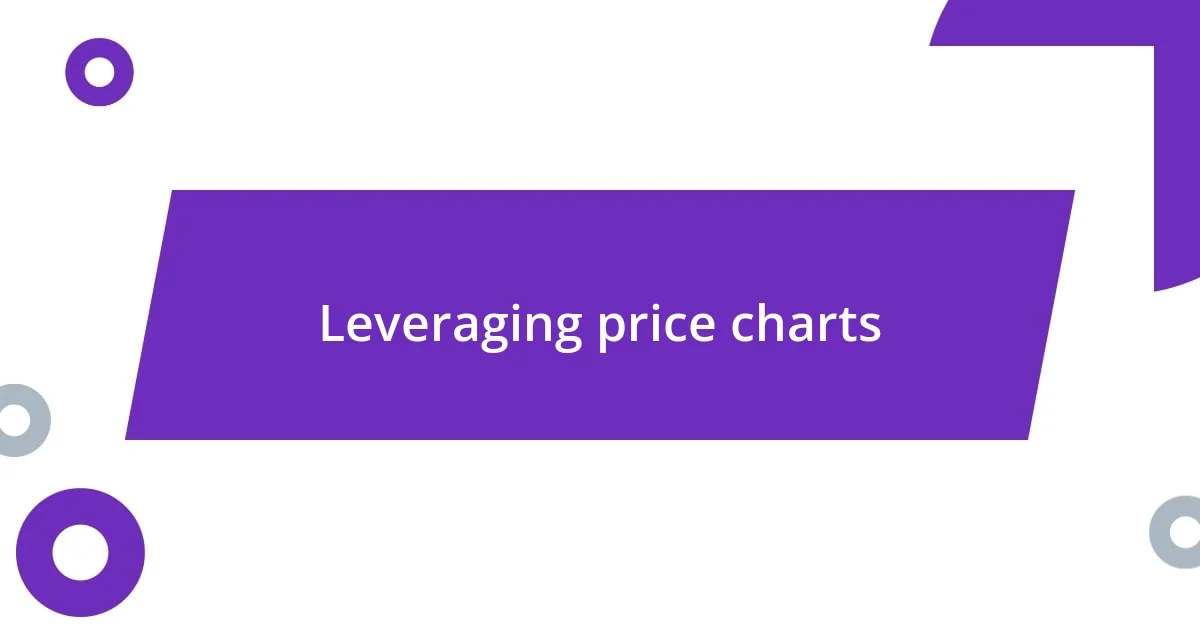Key takeaways:
- Effective negotiation in Bitcoin trading hinges on understanding market trends, price movements, and the psychological aspects of negotiation.
- Setting clear negotiation goals and criteria helps traders make informed decisions and avoid hasty choices that may lead to unfavorable outcomes.
- Closing a deal successfully requires good communication, recognizing body language, and fostering positive relationships for future interactions.

Understanding Bitcoin basics
Bitcoin is a digital currency that operates on a technology called blockchain. This decentralized system means it isn’t controlled by any government or institution, which can feel liberating. I remember the first time I heard about it; it was a bit like discovering a hidden treasure map. I questioned, could this really change our financial landscape?
What really fascinate me about Bitcoin is how it aims to provide a peer-to-peer transaction system. Imagine sending money to someone across the globe without a bank acting as a middleman—it’s empowering! I recall chatting with a friend who was skeptical about using cryptocurrency, but after explaining how secure and transparent these transactions can be, I could see the intrigue in their eyes.
Understanding Bitcoin’s volatility is crucial for anyone diving into this world. Prices can swing wildly, which can be both thrilling and daunting. I’ve felt the adrenaline rush of watching my investments bounce up and down, often wondering if it was a smart decision or a wild gamble. Have you ever watched something you care about just take unexpected twists? That’s the Bitcoin journey for you—full of lessons, caution, and a sprinkle of excitement.

Recognizing market trends
Recognizing market trends is an essential skill for anyone seeking to negotiate Bitcoin prices effectively. I’ve learned that observing historical price movements and patterns can signal potential future trends. There was a moment early in my trading journey when I excitedly bought in during a significant price dip, only to later realize I hadn’t adequately analyzed prior resistance levels. That experience taught me the importance of not only tracking price changes but also understanding market sentiment—it can be a powerful indicator of where things might head next.
One technique I found invaluable is keeping up with news and events that could influence the market. For example, I remember trading on a day notable companies started accepting Bitcoin as payment. The surge in positive sentiment had me quickly adjusting my position. This moment showed me just how crucial it is to stay informed; market trends can change rapidly, and being one step ahead can make all the difference.
In addition, analyzing trading volumes has been eye-opening. When I’ve noticed spikes in volume, it usually signifies increased interest and can indicate a trend reversal. There was a time when I observed a substantial uptick and hesitated, but ultimately decided to act, and it turned out to be a profitable decision. Recognizing these signs, both visually and through data, has honed my negotiation strategies in the market.
| Market Indicators | Insights |
|---|---|
| Price Movements | Look out for patterns and support/resistance levels |
| News Events | Stay aware of market-shaking news to adjust your strategies |
| Trading Volume | Monitor volume spikes as potential trend indicators |

Setting negotiation goals
Setting clear negotiation goals is the backbone of successful Bitcoin trading. Early on, I learned that without specific objectives, I was essentially just throwing darts blindfolded. One time, I jumped into a negotiation without defining my desired price range, and it ended up costing me significantly more than I intended. That experience taught me the value of being purposeful in my approach.
Here’s a quick framework I use to set effective goals:
- Define Your Desired Price Target: Know what price point you’re aiming for based on research.
- Set a Timeframe: Decide how long you’re willing to negotiate before making a decision.
- Identify Minimum Accepted Offers: Determine the lowest price you’d be comfortable accepting; it helps in keeping emotions in check.
- Consider Long-Term Goals: Think about how this negotiation fits into your overall investment strategy to ensure cohesive decision-making.
By establishing these clear goals, I’ve found myself navigating negotiations with more confidence and awareness, leading to far more satisfying outcomes.

Leveraging price charts
I’ve discovered that leveraging price charts effectively can be a game-changer in negotiating Bitcoin prices. When I first started, I often felt overwhelmed by the seemingly chaotic data on price charts. However, once I began to study them closely, I realized they tell a story. Each rise and fall can reveal shifts in market sentiment, which helped me understand when to act and when to hold back. Isn’t it fascinating how a series of lines and numbers can provide insights into human emotions and decisions?
There was a time when I was tracking a particular price chart and noticed a consistent pattern of bouncing back from a certain price level. It struck me as a strong support zone. When the price dipped to that level again, I felt a surge of confidence, knowing history was on my side. My instincts paid off, and I secured a favorable buy-in. I often find myself reflecting on moments like that. How often do we overlook what the data is telling us, thinking it’s too complex, when in reality, it’s just a map guiding us through the market landscape?
Another key aspect I learned is the significance of candlestick patterns. Initially, I simply saw them as colorful visual distractions, but they hold a wealth of information. For instance, one day I spotted a “hammer” candlestick formation, suggesting a potential reversal after a downtrend. Instead of panicking, I positioned myself to take advantage of the possible upswing. The thrill of recognizing those patterns and acting on them felt empowering. Have you ever had a similar “aha” moment with price charts? These insights can transform your trading strategy and boost your confidence.

Mastering negotiation tactics
Mastering negotiation tactics requires a blend of psychological insight and strategic foresight. I recall a time when negotiating the price of Bitcoin, I employed a technique called “anchoring.” By bringing my opening offer considerably lower than what I was willing to pay, I shifted the entire conversation range. It felt a bit like putting my foot in the door; even if the seller initially countered high, my low anchor often kept the final agreement more favorable. Have you ever noticed how the first number mentioned can set the tone for the entire negotiation?
Active listening has proven invaluable in my negotiations as well. Early in my Bitcoin journey, I wasn’t listening closely enough to the other party’s cues. I once missed a seller’s hesitation about a certain price point, which revealed they were open to negotiation. Nowadays, I pay attention not just to what’s said but also to what’s not said. This process helps me identify weaknesses in their position, allowing me to respond strategically. It’s like reading between the lines—what are they really telling me, even if unintentionally?
Additionally, I’ve learned the power of showing patience. One time I was close to sealing a deal, yet I sensed that the seller was more eager than I was. I decided to take a step back and allow them to approach me again. To my surprise, they eventually lowered their asking price significantly. In the fast-paced world of Bitcoin, sometimes the best tactic is to simply wait. Have you ever felt the tension of a negotiation and resisted the urge to rush? I can tell you, patience often pays off in more ways than one.

Evaluating offers effectively
Evaluating offers effectively is crucial in navigating the ever-fluctuating world of Bitcoin. One tactic I find incredibly helpful is to take a step back and analyze the context of each offer. I remember a time when I received an offer that seemed enticing at first glance. Yet, upon closer inspection, I realized it was based on outdated market conditions. That moment taught me the value of thorough research and ensuring that an offer aligns with the current market landscape.
I also pay close attention to the seller’s motivations when evaluating offers. There was an instance where I sensed a seller was eager to offload their Bitcoin quickly due to impending financial needs. Understanding their urgency allowed me to leverage the situation; I made a lower counteroffer that they surprisingly accepted. It’s amazing how emotions and the seller’s circumstances can impact the negotiation. Have you ever thought about what drives someone to sell? Recognizing those factors can turn the tide in your favor.
Finally, I find it essential to set clear criteria for what constitutes a fair deal. I once came across an offer that seemed generous, but it didn’t meet my pre-established benchmarks. By sticking to my criteria, I confidently walked away from that deal, even though it was challenging at the moment. The relief I felt afterward was validating, reminding me that it’s better to wait for the right opportunity than to settle. How often do we rush into decisions, only to second-guess ourselves later? Establishing and sticking to your evaluation standards can help avoid those pitfalls.

Closing the deal successfully
Closing a negotiation on the right note is as important as how you start. I remember a time when I was about to finalize a Bitcoin purchase. I had carefully discussed the price, but instead of jumping to shake hands, I paused and asked the seller if they had any final thoughts. That simple question opened the door for them to share their last-minute hesitation, which ultimately allowed me to renegotiate for an even lower price. Have you ever thought about how a little extra communication can lead to surprising outcomes?
Body language plays a key role in closing deals too. I once noticed that when I leaned in slightly during the final moments, it not only conveyed confidence but also built rapport with the seller. This subtle shift in posture seemed to make them more comfortable, and I could sense their willingness to finalize the agreement. It’s amazing how our physical presence can affect negotiations—has there been a time when you felt your demeanor made a difference in a conversation?
Moreover, sealing a deal isn’t just about the price. After I successfully negotiated a Bitcoin purchase once, I took a moment to express appreciation for the seller’s time and openness. This gratitude not only helped foster a positive relationship for the future but also left the seller feeling good about our transaction. Closing isn’t merely a transaction; it’s about human connection. Have you ever considered how fostering a rapport can influence future dealings? Ultimately, I believe that respectful and sincere exchanges ensure that both parties walk away satisfied, setting the stage for a stronger alliance down the road.














